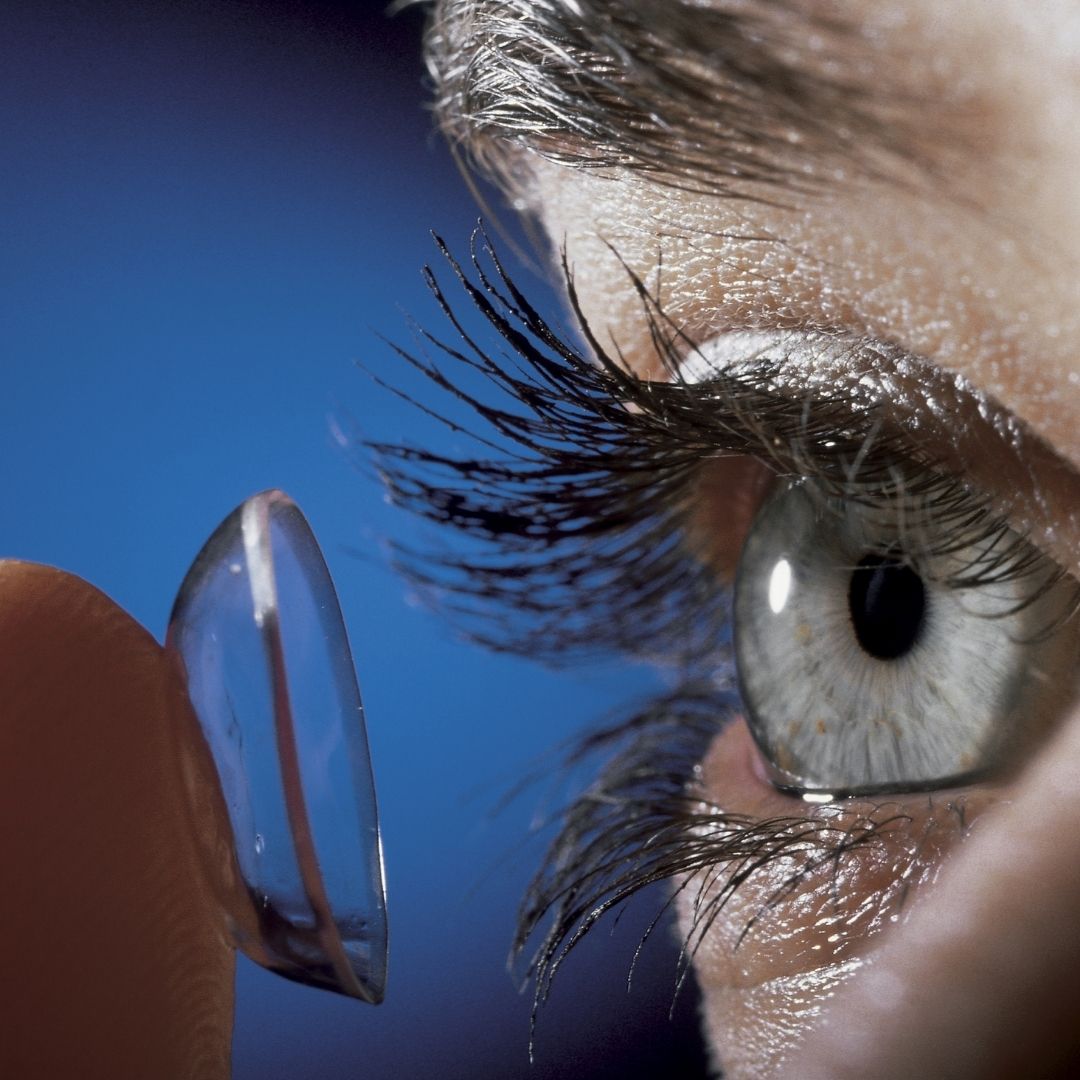Millions of people wear contact lenses as vision correcting devices. But most of them do not follow care instructions, such as the proper way of cleaning lenses, which can result in a range of problems like eye infection and irritation.
Microbial keratitis, for instance, is a common problem among contact lens wearers. This condition is a type of corneal inflammation caused by microorganisms in the eyes. Though the possibility of having eye infection because of wearing prescription eye contacts is relatively low, it increases if you wear your lenses overnight and practice poor lens, hand, and lens case hygiene.
Here are 10 dos and don’ts of wearing and caring for your clear prescription contacts to protect your eyes and prevent serious eye problems.

1. Do keep your hands clean.
Your hands can be covered with microorganisms that can harm your eyes. So before handling your contact lenses, whether putting them in or taking them out, wash your hands well. Use a lotion-free, clear soap, and dry your hands thoroughly.
2. Do know when to replace your lenses.
Depending on the type of contacts you have, you may need to replace them daily, monthly, or yearly.
Contact lenses are made of plastic called hydrogel. These have small holes that allow your eyes to breathe while being worn to prevent problems like dry eyes. Over-usage can cause the holes or pores to clog because your eyes have lipids, bacteria, and protein. Aside from that, your eyes collect debris from daily exposure, including dust and dirt. That is why contact lens replacement is crucial.
Here are the telltale signs that you need contact lens replacement.
- The lenses have expired.
- The contacts feel uncomfortable and irritating to the eyes.
- The lenses appear cloudy.
- There are tears, dents, bends, or damage to any part of the lenses.
- You need new prescription contacts.
3. Do visit your eye physician regularly.
Routine eye check-ups are crucial to make sure that your eyes are healthy. This can also prevent eye conditions that can harm your vision, like macular degeneration, glaucoma, or cataracts that an eye specialist can only detect. Immediate consultation with a professional can also help identify the root cause and prevent further damage. Those living in Utah can easily find an eye doctor in Layton who specializes in contact lens issues to ensure your vision and eye health are prioritized. Just make sure to schedule regular appointments for a comprehensive eye exam.
4. Do clean your lens case.
Apart from keeping your contacts clean, you must also keep your lens case clean.
To clean your lens case, pour all the lens solution out of the case, rub it with your clean finger, rinse it with fresh solution, and then dry it thoroughly with a tissue. After that, store it upside down on a clean cloth or tissue until you are ready to take out your contacts at night.
When filling the case with solution, avoid letting the tip of the bottle touch it.
Moreover, replace the lens case every three months.
5. Do keep your fingernails short.
Keep your fingernails short by trimming them regularly to avoid damaging or scratching your contacts whenever you handle them. Long nails can also be a breeding ground for bacteria and can harbor debris that can irritate your eyes and wear out your lenses.
6. Do give your eyes a break.
The eyes get oxygen from the air. So if you are wearing contacts, your corneas receive a limited amount of oxygen. That is why you must give your eyes a break. Otherwise, excess blood vessels may form in your eyes in your body’s attempt to provide oxygen and essential nutrients. Over time, these new blood vessels can obscure your vision.
Stick to wearing your contact lenses for 12 to 16 hours each day and remove them before going to bed. And if you are wearing contacts every day, consider giving your eyes a break during the weekend.
7. Don’t reuse or top-off lens solutions.
When cleaning your lens case, don’t try to add a new solution to the old solution because this can cause eye irritation and infection.
Do this instead:
- Discard the old lens solution.
- Rinse it with a fresh solution.
- Refill the case with a new solution.
Moreover, don’t use saliva or water as solution replacements. Replace also your solution bottles one month after opening.
8. Don’t put on ripped or torn contacts.
Even if it feels fine, don’t wear a ripped, dried, or torn contact lens. Once the lens gets damaged, it can no longer perform its function. Also, the rough edges of the contacts can scratch the surface of your cornea, causing pain and vision problems. And worse, a piece of the lens may float around your eye, which is not just dangerous but vision-threatening, too.
Get rid of damaged contact lenses and replace them with new ones. Always carry a backup pair to avoid troublesome situations.
9. Don’t wear contacts when doing water activities.
Water is considered the best medium for bacterial growth. It contains microorganisms that can cause an eye infection, so it must not come into contact with your lenses.
So whenever you do water activities or are exposed to oceans, hot tubs, lakes or pools, remove your contacts. Use swimming goggles instead.
10. Don’t share your lenses with other people.
Using other people’s contact lenses or letting other people borrow yours can lead to eye infections because lenses can harbor bacteria and other debris. It can also worsen vision problems instead of correcting them because lenses are prescribed to fit each user’s visual needs.
Contact lenses are comfortable and safe. They can also change your lifestyle. But these require proper care to ensure they serve their purpose. Be mindful of these dos and don’ts to get the best use out of your contact lenses.
Click here if you are looking for a new pair of contact lens.



